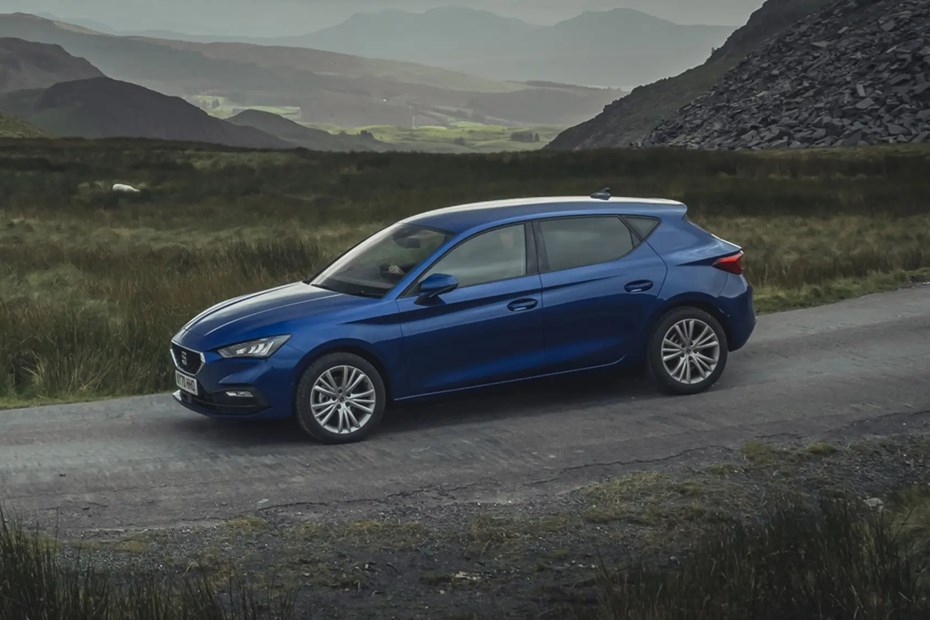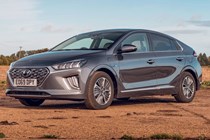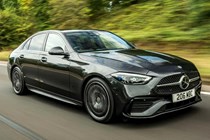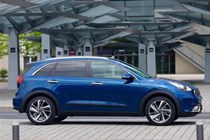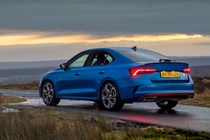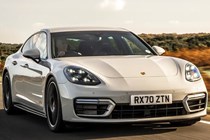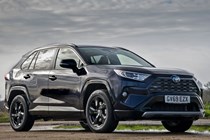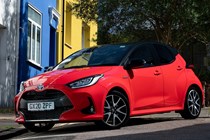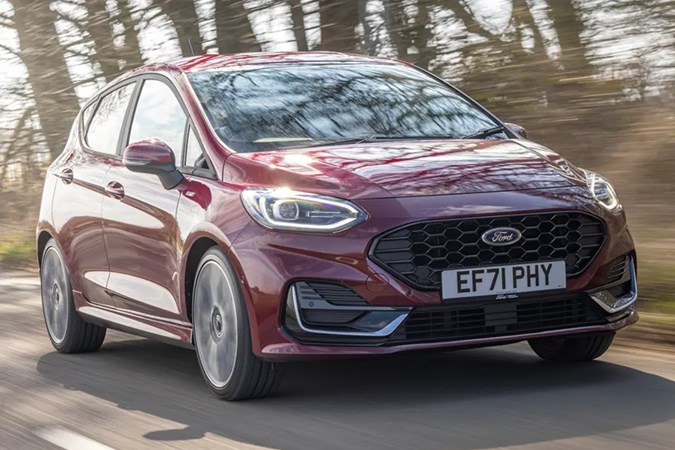With a greater number of UK cities introducing clean air zones (CAZ) or ultra-low emission zones (ULEZ), emissions levels are becoming a bigger factor in car purchasing. Aiming to avoid additional charges and make their driving more environmentally friendly, savvy motorists are looking to buy the best low-emission cars that emit grams of carbon dioxide per kilometre (CO2 g/km) under a particular threshold.
While the most obvious answer might be to finally make the switch to an electric vehicle, such a change doesn’t yet suit every household. There are complaints about the public infrastructure and home charging isn’t as straightforward as perhaps it could or should be. While there is the option of a portable Zipcharge Go charger, such a solution doesn’t come cheap.
The best low-emission cars in 2025
A practical and flexible family PHEV
The 2.5-litre petrol engine is spirited when combined with the electric mode. While it’s not the most polished drive, there’s an engendered sense of safety. With 46 pure-electric miles, cost savings are likely to arrive sooner rather than later
Price new: From £39,875
Price used: From £15,875
To find out more, read our full Toyota RAV4 review
Pros
- Lots of space and practical touches
- Good equipment levels
- Cheap to run
Cons
- Interior looks a bit cheap
- Can be expensive
Sporty SEAT brings sharp styling and green creds
With sharp styling and a great drive, it’s no surprise that the Leon is SEAT’s best-selling model in the UK. It’s sportiness will thrill some, though the cabin tech takes a bit of getting used to.
Price new: From £23,895
Price used: From £10,077
To find out more, read our full SEAT Leon review
Pros
- Sensible pricing
- Good tech and practicality
- Gratifying to drive
Cons
- Infotainment can be a bit fiddly
- FR versions have a firm ride
Effortless low-emission luxury
Aside from firmer suspension, which will put some off, the C300de is a quiet, understated gem. It features a swathe of easy-to-use tech and no one can mistake the quintessentially effortless style of a Mercedes.
Price new: From £45,175
Price used: From £24,352
To find out more, read our full Mercedes-Benz C-Class review
Pros
- Excellent interior
- Modern technology
- Efficient engine options
Cons
- Some areas of low quality
- Not that spacious
Distinctive Niro proves a winner in the low-emission stakes
With a distinct look and spacious interior, the Niro makes an excellent choice for bigger families and the seven-year Kia warranty is a cherry-topping perk.
Price new: From £21,074
Price used: From £19,424
To find out more, read our full Kia Niro review
Pros
- Economical hybrid option
- Excellent warranty
- Practical and neatly finished
Cons
- Not that fun to drive
- Choppy ride
A low-emission family contender
There’s loads of room and a massive boot and since the ride is smooth and refined, it ticks a lot of boxes. Though the hybrid isn’t at its best on longer journeys, the electrified version has a CO2 output of 36g/km. If you’re not too bothered by a bit of body roll, this VW-family hatchback is a well-priced contender.
Price new: From £25,965
Price used: From £10,670
To find out more, read our full Skoda Octavia review
Pros
- Lots of interior space
- Vast boot
- Wide array of options
Cons
- Hybrid's best for short trips
- Not rewarding for keener drivers
A brilliant bestseller with space, style and low emissions
It’s stylish, with great kerb appeal and roominess enough, especially for front passengers. While the boot is a bit small and the interior dates quicker than others, it’s a fine choice for environmental and fuel cost savings.
Price new: From £22,630
Price used: From £10,924
To find out more, read our full Toyota Yaris review
Pros
- Cheap to run
- Lots of equipment
- Affordable to buy
Cons
- Competitors are better to drive
- Interior is a bit dull
A fine-driving SUV that offers luxury and low emissions
The plug-in hybrid variant of the X5 not only boasts a mere 39g/km (or 41, if you opt for the M Sport), but you could also see a fuel economy of around 135mpg. This is due to the 60 miles of pure electric charge and on condition you regularly plug-in to use the battery. Nonetheless, the X5 xDrive45e stats are impressive.
Price new: From £70,095
Price used: From £29,048
To find out more, read our full BMW X5 review
Pros
- Upmarket interior
- Great to drive
- Economical engine options
Cons
- Rear room isn't great
- Fiddly media and climate controls
Pricey but poised performance hybrid
While mpg ratings won’t be kind to wallets, the Panamera boasts a remarkable 57g/km. Achieving that means keeping the battery of this family-friendly sports car topped up, but could be worth the effort for keen drivers.
Price new: From £81,120
Price used: From £28,178
To find out more, read our full Porsche Panamera review
Pros
- Superb driving experience
- Advanced technology
- Comfortable and refined
Cons
- Not as spacious as conventional saloons
- Very big
The well-built Korean hybrid with top tech
Yet, even the hybridised Ioniq variants offer great scores on the emissions front. The plug-in hybrid states only 26g/km, with 39 miles of pure electric driving. Alternatively, the hybrid without the faff offers 84g/km, with a claimed fuel economy of over 75mpg.
Price new: From £21,695
Price used: From £8294
To find out more, read our full Hyundai Ioniq review
Pros
- Good warranty cover
- Economical and cheap to run
- Competitive pricing
Cons
- Interior isn't the most appealing
- Toyota's Prius is more efficient
First-time drivers’ favourite fuel and eco-friendly motor
‘ECOnetic technology’ and ‘EcoBoost’ are Ford’s watchwords for good fuel economy and respectable green credentials. With the 1.0-litre petrol engine emitting 108g/km, the 1.5-litre diesel engine fares a little better at 96g/km. Now in its eighth generation, the most recent Fiesta features great build quality and a swathe of kit, but it goes out of productiuon this year.
Price new: From £19,350
Price used: From £4,361
To find out more, read our full Ford Fiesta review
Pros
- Fun to drive
- Well equipped
- Compact yet practical
Cons
- Cheap interior trims
- Quite expensive
Which cars emit less than 75g/km of CO2?
Ultra-low emissions vehicles (ULEVs) are cars or vans with 75g/km or less carbon emissions. ULEVs meet Euro 6 standards and have a 20-mile zero-emission range (minimum). Simply ‘low-emission vehicles’ are those with emissions less than 100g/km.
When deciding on the vehicle with the lowest carbon footprint, some calculate the ‘well-to-wheel’ emissions as part of the overall calculation. This includes the emissions during production. Many manufacturers have integrated high levels of recycled materials, solar power and other earth-conscious solutions into the making of their motors.
Most consumers, however, are simply interested in the carbon emitted while driving. Hybridised vehicles make the best compromise between pure electric and pure conventionally fuelled cars regarding the change to driver habits. What’s more, the partial electrification of a fossil-fuelled car improves the fuel economy and lowers the CO2g/km emissions.
Does a hybrid car make sense?
Hybrid cars have been squeezed out of the exemptions list in the most recent update to the ULEZ criteria, so your best bet is to buy electric for ultimate ‘zero emissions’. And since the used electric car market is already beginning to grow, this option isn’t as limiting as it once was. But when it comes to determining which car has the best emissions, the question remains; what are you using it for?
For example, if you tow a caravan or trailer, options to go electric are fewer. Since we’ve already got a few lists of the best electric vehicles; for range, for families, SUVs, small EVs and affordable electric cars, this list looks at vehicles beyond the obvious all-electric choices.
Just so you know, we may receive a commission or other compensation from the links on this website - read why you should trust us.


